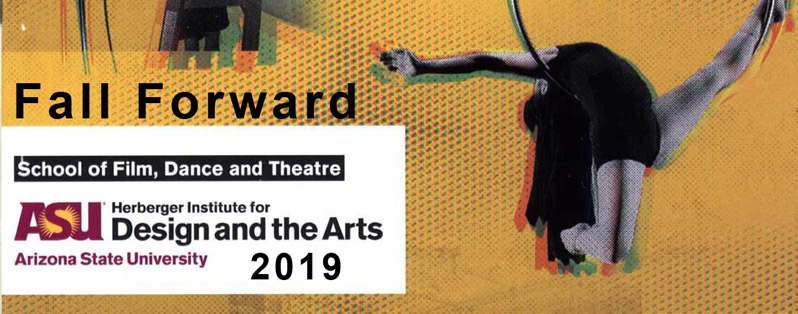Choreographer: Janessa Clark
Performers: Courtney Drasner
Reviewing a dance film is complicated. Because there’s the dance performance, and then there’s the film, and then there’s the dance film. Any meaningful analysis has to address all three. You could write a dissertation on this stuff, but I’ll try to keep it short because, well, in this format I have to.
First, as Bob Dylan said, “you’re gonna have to serve somebody”. Is this a film with a dancer or is it a dancer being filmed? It’s a collaboration that can go either way. On the continuum, this film is more in service to the dance. There are some cinematic staples like an establishing shot of an old barn-like structure, intriguing close-up pans of the dancer, emphasizing her costume and the text painted on her body, but then it reframes to cover her movements. At that point, it’s primarily documenting the dance.
For those who care about such things, it’s a simple one-camera shoot, utilizing steady-cam for close-ups but relying mostly on wide shots with relatively few cuts, none of which involve dramatic changes in perspective. As a result, the dance appears continuous to the audience. The important thing to note is that the cinematography is not drawing attention to itself with extreme angles, tricky transitions and editing effects. Those are all perfectly fine, but they move the needle away from dance and closer to film. This is a straightforward technique that doesn’t require a hundred takes and relies on the dancer and the background/context to provide the bulk of the visual interest.
As for the performance, it was good, but in context, unmemorable. Obviously, this piece was intentionally designed to be visually interesting. Consider the visual elements: Rustic barn. Dancer in modified underwear. Dancer’s body extensively painted with text. Dancer wearing clunky boots. Dancer in underwear and clunky boots with text all over her body walking out into a snowy landscape. That’s a lot of eye candy, and for the viewer, the dancer and the location become more memorable than the dance.
Again, that’s not a bad thing but it points to the third element, the dance film (remember the continuum?). Dance is about motion. Film is about capturing motion. Logically, they should belong together, but we see many examples of failed marriages – usually a result of dramatically different competency levels or warring intensions. It’s an artistic collaboration, and I think this piece found the necessary compromise. The beginning and ending were decidedly filmic, the program content somewhere between a recording of a dance performance and interesting shots of a visually compelling dancer. Let’s just call it a successful dance film.
Viewed Re/Viewed


Recent Comments